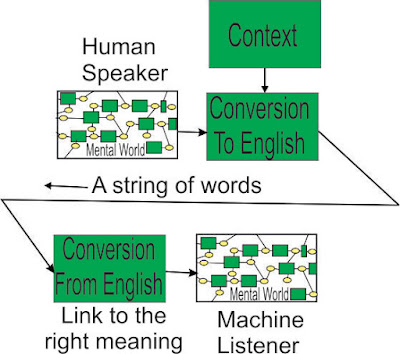Is It Time to Rethink Autonomous Kit?
Alphabet/Google departed the scene years ago, spending how
much? Certainly in the billions.
Apple has abandoned the field, after spending $10 billion over 10 years to get nowhere. “But we were so close”.
Tesla battles on, making tyro mistakes.
After seven years – trying to fit through an aperture for
which it was too large – the gap between the tarmac and the belly of a business
jet (admittedly parked in a carpark, but on top of previous reports about
trying to drive under the belly of a fuel tanker).
After eight years:
·
Not observing that the gate of a gated community
was closed.
·
Slamming on the brakes when the traffic light
turned yellow, even though the following driver thought there was adequate time
to cross (the Tesla owner is assured photos are used in the training of the ANN
- photos of the prediction for a continuing process will be of little help in
training a static device).
·
Not understanding simple signs, like Entry and
Exit.
From someone in the Tesla design team:
A suitable word for this is Foolishness. Attempting to train a static device to handle all the vagaries of driving is a hopeless task, which should have been obvious within a few weeks of starting the project. Not attempting to study the task first is even more damning.
The only similarity between a real Neural Net and an
Artificial Neural Net are the two words in the names.
A real neural net has feedback, feedforward, the ease of
assembling a predictor for a new situation in a fraction of a second, many
separate processes easily joined together and communicating with each other –
visual, aural, threat detection – avoidance
of a collision course, a rear-ender, the grill of a gate. An artificial
neural net is a directed resistor network, with all the limitations that
suggests. No amount of tinkering will allow it to match a real neural net –
filtering static data is more its bailiwick.
Sightlines
It would be great if streets and roads were laid out in
rectangular blocks, with sightlines sufficiently long that an intersection can
be crossed with confidence. Unfortunately, residents are against having their streets
destroyed and rebuilt, Instead, they insist that an AV have a similar ability
to a human driver in working out when it is safe to proceed.
This is the merging intersection of the Kingsway and President Avenue at Caringbah (a southern suburb of Sydney). As the intersection occurs between a straight line and a curve, the sightlines are messy. Instead of being able to look for movement down a line of vehicles, you can only see a few vehicles before they turn and disappear behind a line of stationary vehicles. It becomes necessary to draw an inference from indirect information – something that the Unconscious Mind in a human driver does well.
It is understandable that AV manufacturers do not want malevolent drivers to train the vehicle to “suicide” itself, then make a claim for millions – “It could have been us in that car!”. The inability to adapt to new situations (in the way a person so easily does) is a serious impediment to their introduction.
Reading Signs
The owner of the newly upgraded Tesla reports the Tesla
driving across the lane with the Entry sign, and attempting to enter the
shopping complex through the Exit lane. Signs can start simple, then get
complicated.
Signs can directly address the driver’s Unconscious Mind (see Lane Following)
The sign assumes that the system reading the sign knows colours, knows what a Lane Marking is, understands "use" as a verb, and knows the sign does not apply if there is only one set of lane markings. The system is definitely not constructed from ANNs, but from Active Semantic Structures.
It seems obvious to take this further and have the “Road Rules” for the AV written in English, so the system would have a vocabulary that is dense with concepts and objects related to driving, and not much else (all the common words in English - "and", "the", "on" - are already present for reading the complex text of legislation). “Cyclist” has as definition a person riding a bicycle (which in road terms is a fragile, unstable machine, but very valuable while it supports a rider), with the gap that must be maintained during passing, and values for acceleration, braking, and maximum speed for the flat, uphill, downhill. Similarly for trucks, the jack-knifing of semis, a B-train, the frequent stopping of buses, behaviour in the wet or on icy roads, the screeching of tyres under heavy braking.
If this sounds expensive, remember $10 billion over ten years, and complete failure. If the AV is to compete with, and mingle with, human drivers, it can’t be crude. It also can't copy the behaviour of other vehicles - that might work well while AVs are rare, but would be disastrous when they become commonplace.









Comments
Post a Comment